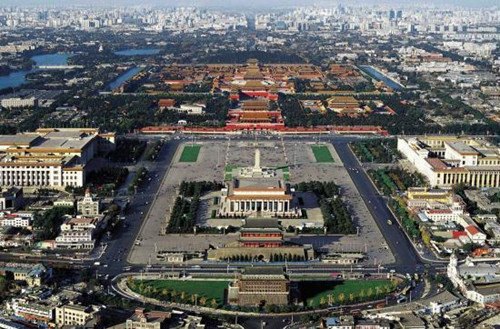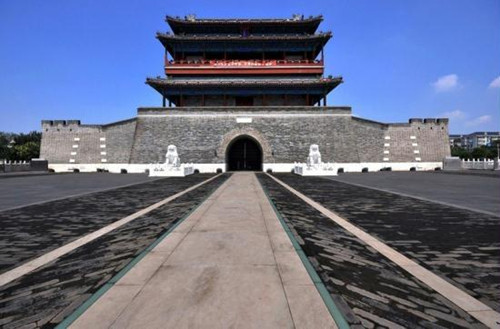
Beijing's central axis, which passes through a myriad of ancient buildings and traditional hutongs, is one of the two items in Beijing to be listed as a candidate.

Beijing's central axis, which passes through a myriad of ancient buildings and traditional hutongs, is one of the two items in Beijing to be listed as a candidate.
You may have heard of protecting physical relics and tombs, but how about large parts of an entire city? Beijing's cultural heritage authorities have been pushing hard to get the city's central axis, an ancient line that marked key routes through the capital and divided the city, recognized as a UNESCO World Cultural Heritage site. The eight-kilometer long axis is among 45 items to be short-listed into the application list.
Beijing's central axis, which passes through a myriad of ancient buildings and traditional hutongs, is one of the two items in Beijing to be listed as a candidate. The other is Beijing's section of the Grand Canal. The axis links Yong Ding Gate, the south end of ancient Beijing, to the Bell and Drum Tower, the north end of the ancient capital.
The axis also stretches through to Qian Men, Tian'an Men and the Forbidden city. A large scale renovation project has been underway since May, to renovate the buildings and hutongs along the axis. The inclusion of the axis into China's application list of world cultural heritage sites will help to protect the feel and look of the ancient capital.
China has a rich and endless collection of cultural relics, but the country has gone through a difficult journey in properly protecting its countless sites and treasures. In 1982, China approved a law on cultural relics protection, and thirty years later, great achievements have been made. But there is still a tough road ahead.

Copyright ©1999-2011 Chinanews.com. All rights reserved.
Reproduction in whole or in part without permission is prohibited.